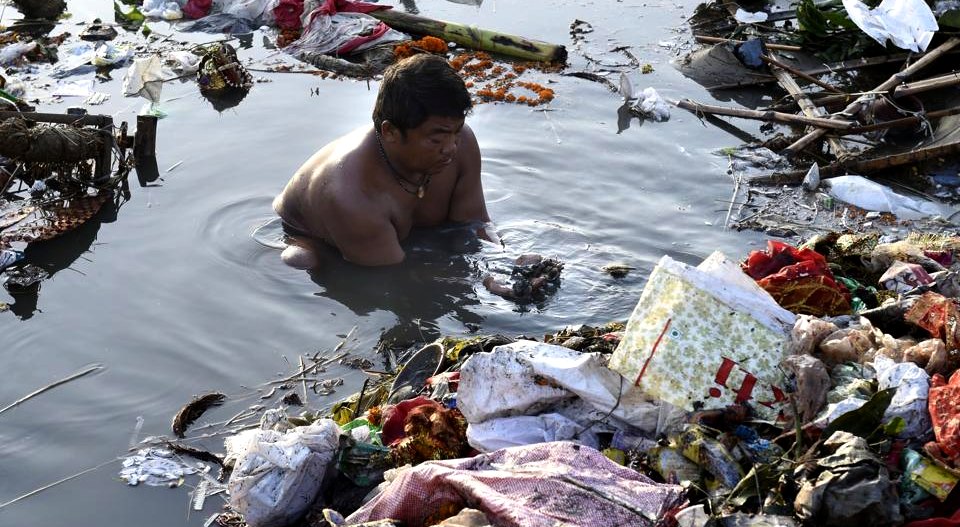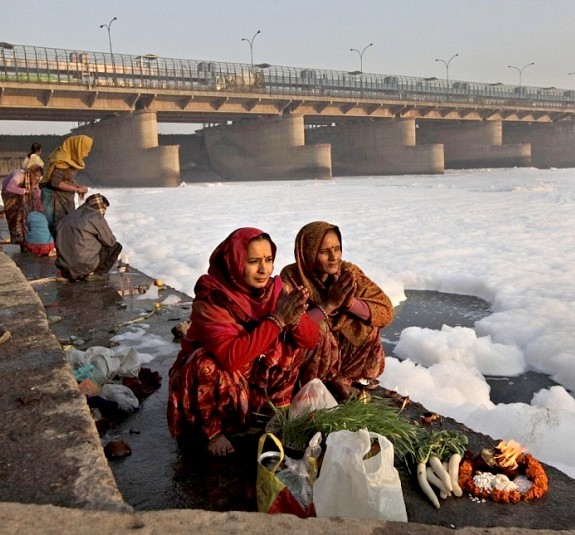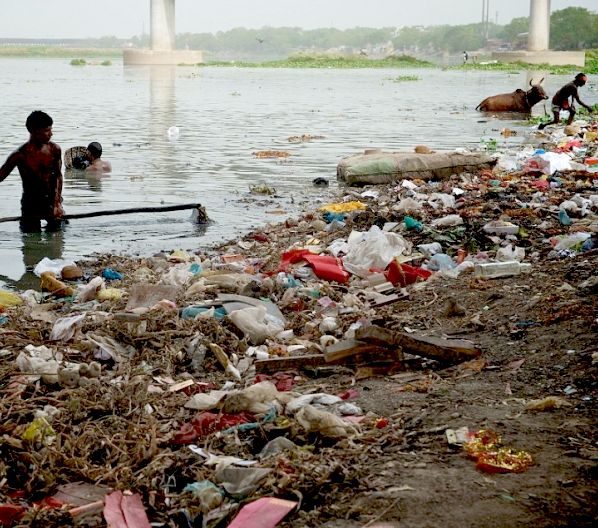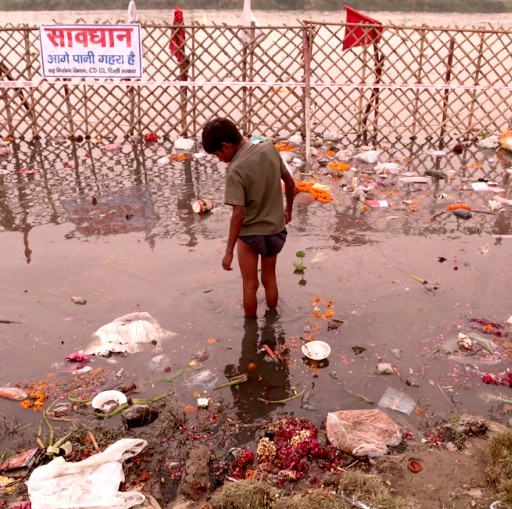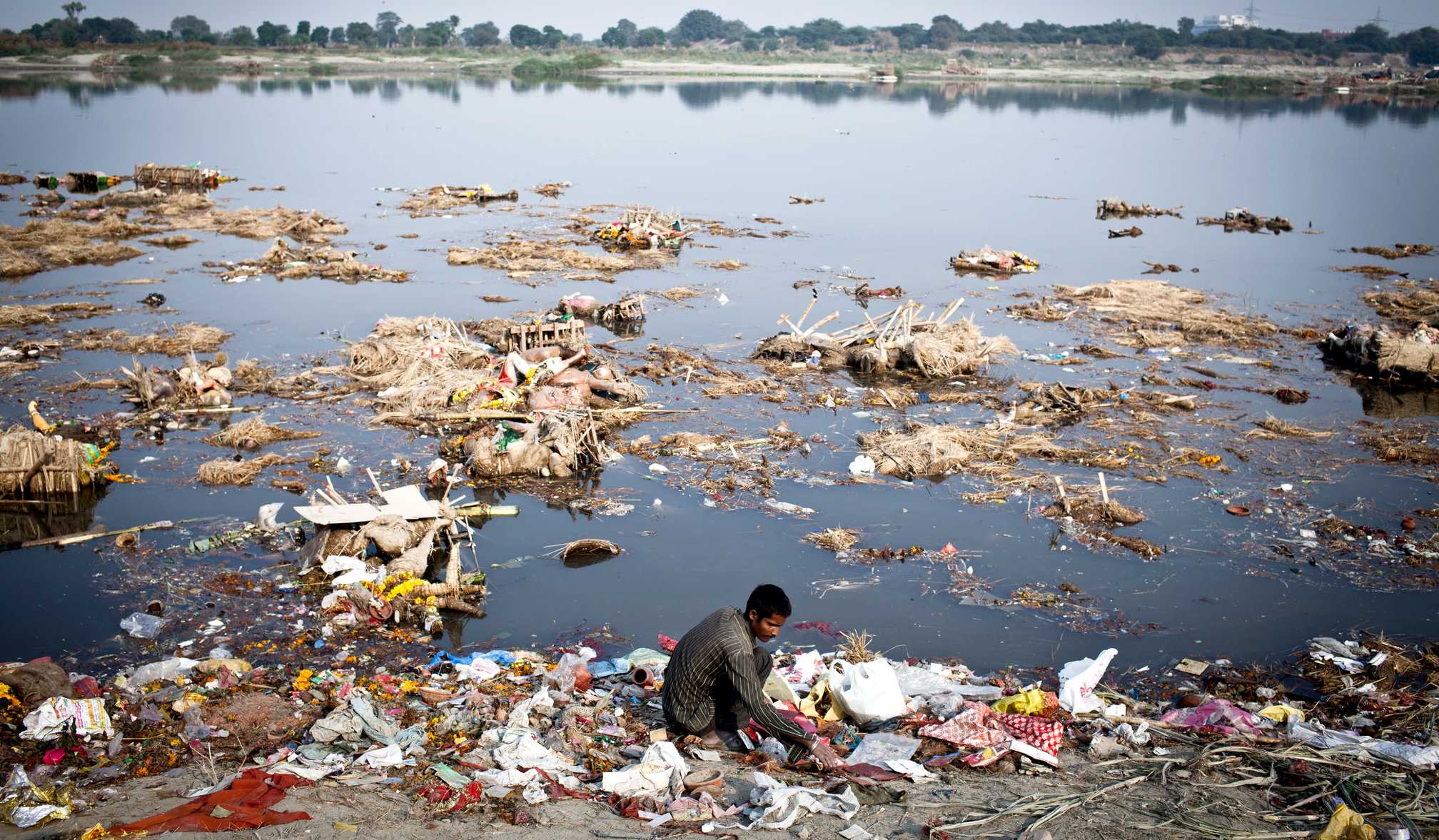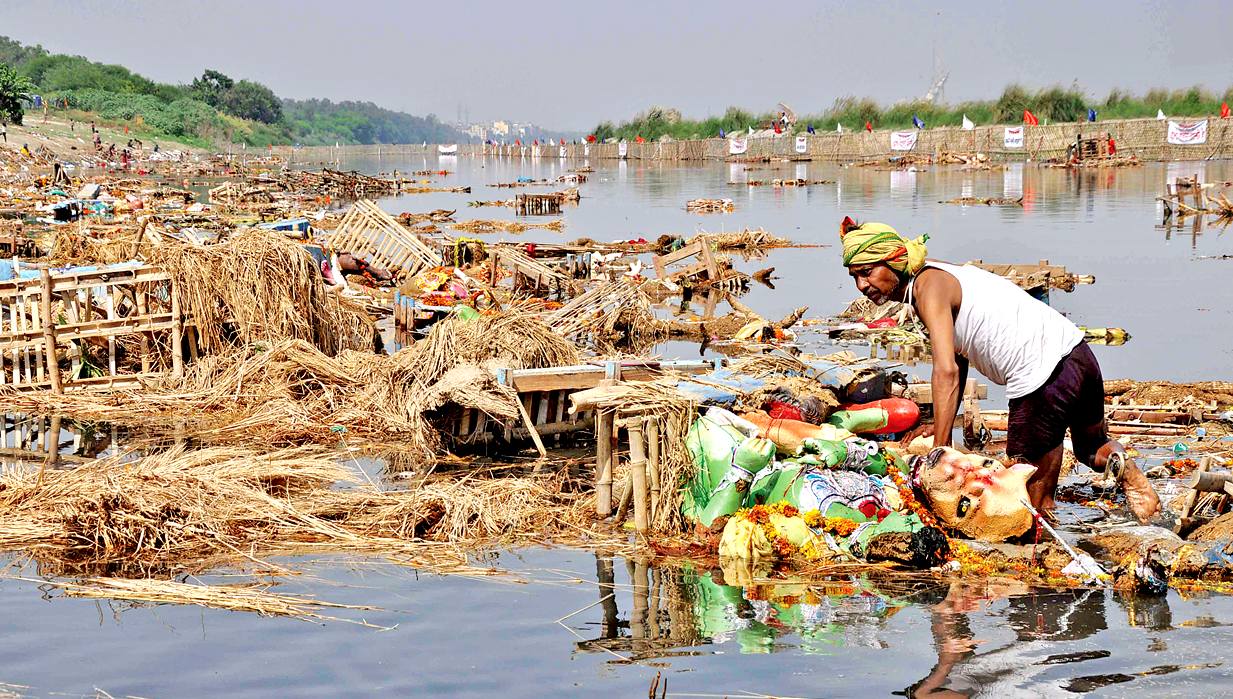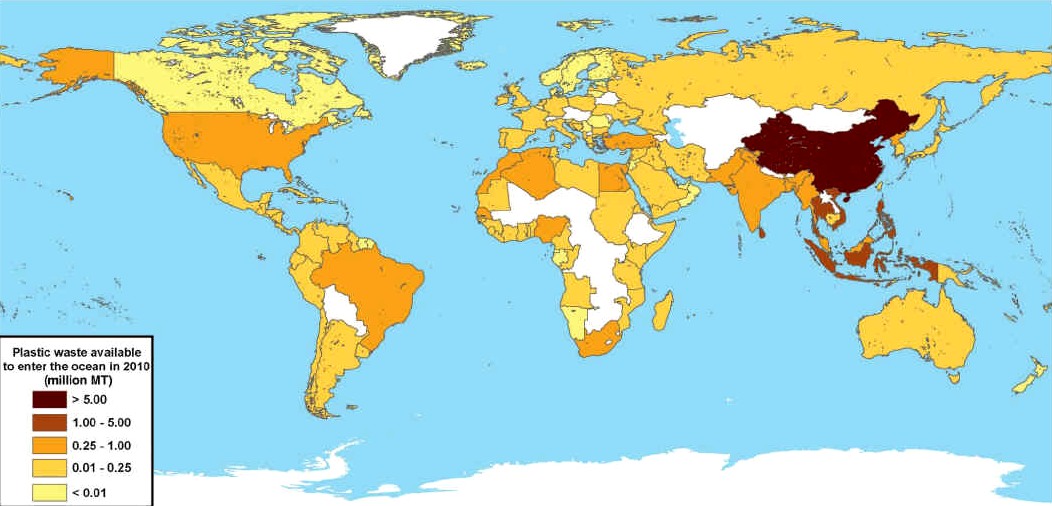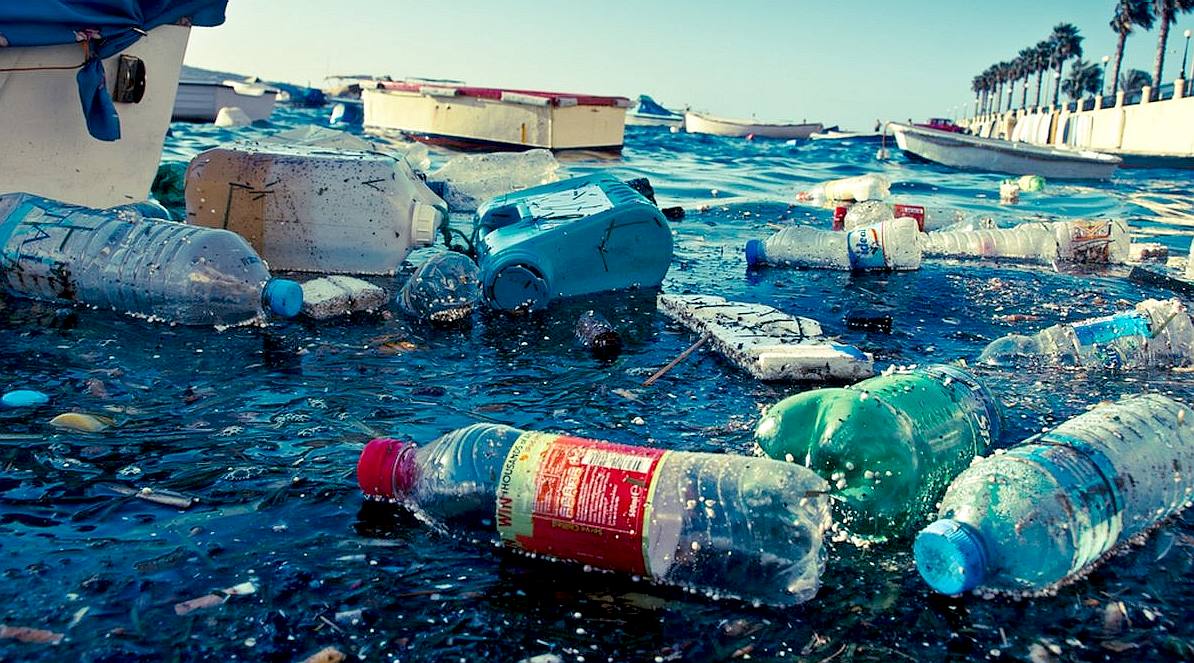|
YAMUNA
PLEASE USE OUR A-Z INDEX TO NAVIGATE THIS SITE |
|||||||||||||||||||||||||||||||||||||||||||||||||||||||||||||||||||||||||||||||||||||||||||||||||||||||||||||||||||||||||||||||||||||||||||||||||||||||||||||||||||||||||
COIN HUNTING - After the idol ceremonies, people sift through river silt searching for coins.
The Yamuna originates from the Yamunotri glacier in the Lower Himalayas, Yamuna is the largest tributary of the Ganges. It flows through several states of North India, and creates a very fertile and alluvial region at its confluence with the Ganges.
It is considered to be the second most polluted river in India after the Ganges. Millions of tons of household garbage is discharged into the river each day, and every attempt to curb this has failed till so far. Traces of poisonous insecticides have also been found in the Yamuna, recently. Extreme urbanization and soil erosion are also serious causes of concern.
The
Yamuna, also called Jammuna, is the second largest tributary river of the Ganges that flows through Indo-Gangetic Plains.
Urbanization and industrialization has literally killed River Yamuna. New Delhi, that generates 1,900 million liters per day of sewage, dumps 58 percent of its waste into Yamuna. Untreated waste that flows into it from several cities along its banks in Haryana and Uttar Pradesh is Yamuna’s biggest enemies.
An alarming amount of polluted water is supplied to the Agra canal for irrigating the agricultural lands of 638 villages.
JAN 2018 HIGH COURT PLEA
...
Around ninety percent (90%) of plastics in the ocean comes from just 10 rivers. Nine of these rivers are located in Asia and one of them borders Thailand.
The top 10 most polluted rivers in the world have one thing in common – they are located alongside large human populations with poor waste management (PWM) systems.
Every
year the world, produces 300 million tonnes of plastics, and 8.8 million tonnes of these are dumped into the oceans. That’s about 40 billion plastic
bottles, 100 billion single-use plastic bags, and 522 million personal care items. If you know a seriously polluted river, or one that should be a candidate on a bigger list, please contact Cleaner Ocean Foundation.
The rivers noted, added to hundreds of other lesser contributors feed the five ocean gyres to poison marine life and cover the seabed in a mountain of plastic.
JAMBECK 2010 - Global map with each country shaded according to the estimated mass of mismanaged plastic waste [millions of metric tons (MT)] generated in 2010 by populations living within 50 km of the coast. 192 countries were considered. Countries not included in the study are shaded white.
LINKS & REFERENCE
https://
|
|||||||||||||||||||||||||||||||||||||||||||||||||||||||||||||||||||||||||||||||||||||||||||||||||||||||||||||||||||||||||||||||||||||||||||||||||||||||||||||||||||||||||
|
ABS - BIOMAGNIFICATION - CANCER - CARRIER BAGS - COTTON BUDS - DDT - FISHING NETS - HEAVY METALS - MARINE LITTER - MICROBEADS MICRO PLASTICS - NYLON - OCEAN GYRES - OCEAN WASTE - PACKAGING - PCBS - PET - PETROLEUM - PLASTIC - PLASTICS - POLYCARBONATE POLYOLEFINS - POLYPROPYLENE - POLYSTYRENE - POLYTHENE - POPS - PVC - SHOES - SINGLE USE - SOUP - STRAWS - WATER
AMAZON - AMUR - BRANTAS - BURIGANGA RIVER - CITARUM RIVER - CONGO - CROSS - DANUBE - DONG - CUYAHOGA - GANGA - GANGES - HAI HE -
HANJIANG - HUANGPU - IMO - INDUS - IRRAWADDY - IRTYSH - RIVER JORDAN - KWA IBO - LENA - MAGDELENA - RIVER MANTANZA-RIACHUELO
MARILAO - MEKONG - MISSISSIPPI RIVER - NIGER - THE RIVER NILE - PARANA - PASIG - PROGO - SARNO - SERAYU - SOLO - TAMSUI
THAMES - XI - YAMUNA - YANGTZE RIVER - YELLOW - ZHUJIANG PEARL
PLEASE USE OUR A-Z INDEX TO NAVIGATE THIS SITE
|
|||||||||||||||||||||||||||||||||||||||||||||||||||||||||||||||||||||||||||||||||||||||||||||||||||||||||||||||||||||||||||||||||||||||||||||||||||||||||||||||||||||||||
|
This website is provided on a free basis as a public information service. copyright © Cleaner Oceans Foundation Ltd (COFL) (Company No: 4674774) 2024. Solar Studios, BN271RF, United Kingdom. COFL is a company without share capital.
|
